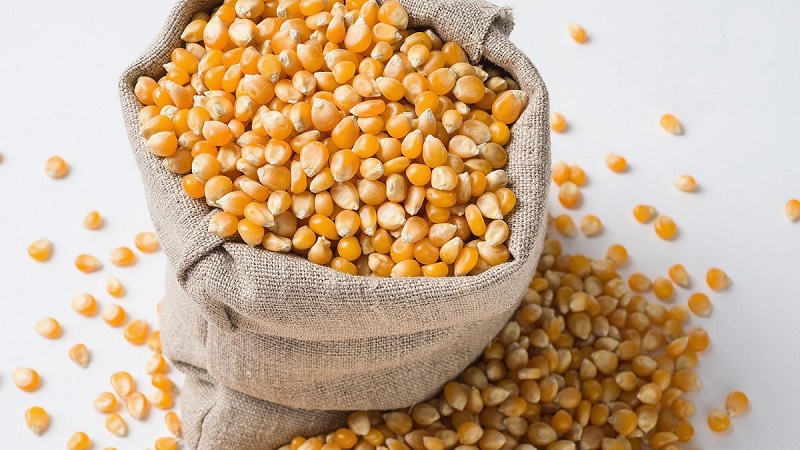Corn – is a grain as well as a vegetable. It grows on a tall herbaceous stalk and produces large kernels on the cob. Corn kernels can range from white to yellow. There is, for example, “Indian corn” which has kernels that are a mixture of yellow, orange, brown, red and purple.
Quality standards
The existing quality standards for corn grits and flour are outdated, as they do not answer the main market questions that determine the quality of cereals and flour today. Today, relations between the manufacturer and the consumer are two-way and are built on the basis of contractual relations, according to which quality requests are formed in the market. And these requests cannot always be fit into existing norms. The main indicators that differ from the standards are:
- Size size indicators, since consumers have requests for cereals of intermediate numbers, for example, No. 5 extra, which is a grain size between number 5 and coarse flour.
- Fat content, which is not regulated in cereals, and in flour the basic indicators are so high that it is very difficult to sell flour with such fat content. Although on the part of consumers these restrictions are quite strict.
- And the content of dark inclusions that spoil the appearance of the cereal. This is also a non-regulated parameter, but controlled by consumers (accurate per 1 dm.sq.).
Corn is used for processing for the production of cereals according toDSTU 4525:2006 CORN Technical specificationsfrom 3 to 6 types, but mainly it is type 3 – flint yellow and type 5 – semi-toothed yellow. Type 3 is characterized by a higher content of the stratum corneum and a lower content of the powdery layer.
The existing standards do not indicate the limit values for the content of the horny and powdery layers, as well as a number of other important indicators that affect the yield and quality of the finished product. Such as:
- Fissuring of the endosperm. The indicator depends mainly on drying and transportation modes.
- Content of the embryo.
- Fat content in endosperm.
All these indicators affect the yield and quality of the finished product, but they are not determined and at the moment there is not even a method for determining them. In this regard, it is impossible to accurately determine the yield and quality of finished products from different batches of grain, even if they are of the same quality.
Corn is sometimes called “yellow gold” because it is used to produce a wide variety of products.
Basic facts about corn processing and consumption:
- Corn processing begins with the kernel – each ear of corn usually contains 200-400 kernels.
- During the wet milling process, the outer portion of the kernel is removed and used to make animal feed.
- The tip of the seed is removed to obtain corn oil.
- Endosperm – the carbohydrate-rich, starchy part of the corn kernel – is the raw material for fermentation and conversion into sweetness, called “dextrose stream”.
- About 85 percent of the corn crop is used for food, animal feed and many types of industrial products.
Distribution of main types of corn:
- Food Products – Cereals, snack foods, salad dressings, soft drink sweeteners, chewing gum, peanut butter, humic grains and other flour products, specialty corn including popcorn and blue corn.
- Animal feed – dry grains, high oil corn for cattle, pigs, poultry and fish.
- Industrial products – soaps, paints, corks, linoleum, polishes, adhesives, rubber substitutes, wall panels, dry batteries, textile finishing, cosmetic powders, candles, dyes, pharmaceuticals, lubricants, insulation, wallpaper and other starch products.
- Fermentation products and by-products – industrial alcohols, fuel ethanol, recycled plastics, industrial enzymes, fuel octane enhancers, fuel oxygenates and solvents
Corn producers.
Ukraine, along with Russia and Kazakhstan, are the main countries that are responsible for corn production in the Black Sea region. Ukraine has vast tracts of fertile land rich in chernozem (or “black soil”), and this chernozem is one of the most fertile lands in the world.
Thus, despite being a small country, a large number of crops are grown here in abundance. Ukrainian producers annually produce 39.2 million tons of corn. In 2017, 52% of Ukraine’s corn was exported to other markets in the European Union. Meanwhile, 14% of the corn was exported to Egypt, and 11% of the corn share was delivered to South Korean markets. Other important markets for Ukrainian corn can be found in Japan, Iran, China, Syria and several other countries. Ukraine accounts for 16% of the world’s total corn exports.
Consumer demand for corn is growing, this is due to the fact that demand in the starch and meat production sectors is increasing, due to the fact that corn is used as feed, demand is growing in the industry poultry farming.






























